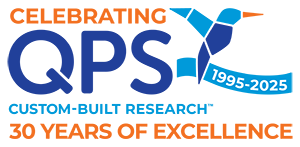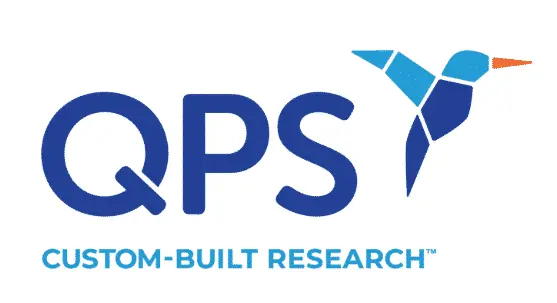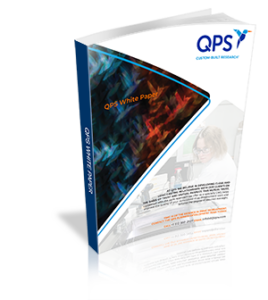Historically, LBA and LC–MS have been acclaimed as gold-standard technologies in large molecule and small molecule quantification respectively. However, advances in the field have granted opportunities for LC–MS quantification for larger molecules enabling multiplexing, as well as potentially overcoming cross reactivity experienced in LBAs.
With the development of more complex protein and peptide-based therapeutics, drug manufacturers are under increasing pressure to adopt bioanalytical approaches with the capability of quantifying and characterizing multiple modalities, with the high-throughput requirements of early-stage PK studies.
In this ‘Ask the Experts’ feature, we will be revisiting a previous Spotlight to investigate where we are now with hybrid LBA/LC–MS and what the future may hold for the technique. We interview key figures from pharma and CROs about their experiences and thoughts on hybrid LBA/LC–MS, giving our members a 360° opinion piece.
Meet the Subject Matter Experts

Fabrizia Fusetti

Omnia Ismaiel

Eric Ma

Diego Cortes

Steven Piccoli

Olivier Heudi
1. Could you briefly introduce yourself and your organization?
Fabrizia Fusetti (QPS)
QPS is a full-service global CRO gathering more than 1200 employees worldwide, engaged in facilitating all stages of drug development, from early exploratory to late phase clinical. During the last 25 years, QPS bioanalytical facilities have provided support and expertise in the development and validation of quantitative assays for small and large molecules, from peptides to proteins and oligonucleotides, implementing LBA and LC–MS platforms across multiple innovative techniques.
I joined QPS (Groningen, The Netherlands) in 2014 after having spent most of my career in academia where I was involved in fundamental and applied research projects mainly focusing on the study of proteins and enzymes. I have participated in numerous collaborative projects, resulting in over 40 peer-reviewed publications and gained experience in analytical chemistry, mass spectrometry, molecular biology, biochemistry, proteomics and structural biology.
I am currently based at the European bioanalytical site of QPS, where I have contributed to the development and validation of several LC–MS methods for regulated bioanalysis of peptides, therapeutic proteins, monoclonal antibodies, ADCs and other drug conjugates.
Omnia Ismaiel (PPD)
I am a senior research scientist at PPD Laboratories bioanalytical lab in Richmond (VA, USA), an associate professor of pharmaceutical analytical chemistry, Faculty of Pharmacy, Zagazig University (Egypt) and a graduate affiliate professor and postdoctoral fellow, School of Pharmacy, Virginia Commonwealth University (VA, USA). I was a postdoctoral research associate at the University of Georgia (GA, USA). I received my pharmacy degree with honors and a master’s of science in pharmaceutical analytical chemistry from Zagazig University. I received a Channel Scholarship to finish my PhD research project at Virginia Commonwealth University. I have coauthored more than 50 scientific articles and posters. I have been an invited speaker at several different conferences. I have been in the bioanalytical field for more than 13 years and have many years of teaching experience and mentoring graduate students. I am a reviewer for more than ten high impact peer-reviewed journals and serve as the editor-in-chief of Reviews in Separation Sciences Journal. My research interests include bioanalytical mass spectrometry, biotherapeutics by LC–MS, glycan analysis and high-resolution mass spectrometry.
Eric Ma (PPD)
I am a senior principal scientist at PPD Laboratories bioanalytical lab (VA, USA). I have been working LC–MS bioanalysis for therapeutic peptides and proteins for more than 10 years. I am the author of more than 30 scientific papers and conference presentations. I hold a PhD in chemical biology from Texas A&M University (TX, USA).
Diego Cortes (PPD)
I am a research and development manager within the chromatographic sciences department of PPD Laboratories’ bioanalytical lab (VA, USA). I received a PhD in genetics, bioinformatics and computational biology from Virginia Tech (VA, USA) in 2008. I was a post-doctoral fellow with the department of biology and the Virginia Bioinformatics Institute at Virginia Tech and the department of neurobiology at Virginia Commonwealth University in Richmond (VA, USA) . I have over 20 years of experience in scientific research in biological sciences, ranging from genomics and bioinformatics, to metabolomics, proteomics and bioanalysis. I currently manage a research and development team that is conducting bioanalytical method research and development primarily for protein biotherapeutics using LC–MS technologies.
Steven Piccoli (GSK)
Steven Piccoli is currently Senior Director in precision medicine and companion diagnostics at GlaxoSmithKline (PA, USA), a global health care company focusing on pharmaceutical medicines for oncology, immunology and respiratory diseases, as well as vaccines and consumer products. As an internationally recognized expert in clinical biomarkers, he has held a wide range of scientific and operational leadership positions in consulting, pharma, biotech, CROs and clinical (CLIA) laboratories, as well as founding three medical technology-based companies. Primarily interested in clinical diagnostics, he has successfully launched over 35 commercial assays utilizing MS, LBA, IHC, PCR and DNA sequencing.
Olivier Heudi (Novartis)
Olivier has been working in the field of analytical sciences since obtaining his PhD in Biological Sciences from the University of Angers (Angers, France) in 1999. Capitalizing on exposure gained within pharma and food companies, he has occupied positions of increasing responsibility over this period. In 1999, Olivier joined GSK (Stevenage, UK) as a research scientist to work on the linkage of LC–ICPMS–HRMS for peptide analysis in biological fluids. In 2002, he moved to Nestlé Research center (Lausanne, Switzerland) as Laboratory Head to lead the Vitamins group and implement HPLC–UV and LC–MS/MS techniques for the analysis of ingredients in foodstuffs. In 2005, he moved to the Novartis Institute for Tropical Diseases in Singapore as bioanalytical lab manager.
In 2006, he joined the Novartis PK Science group (Switzerland) as a Senior Investigator to provide and oversee scientifically robust compound progression strategies by optimizing pharmacology, biopharmaceutics, pharmacokinetics and pharmacodynamics for the rapid advancement of medical treatments and therapies from research through post-approval. Olivier’s current interest focuses on the development of LC–HRMS for the analysis of intact proteins in a regulated environment. Olivier has authored over 40 peer-reviewed articles as well as book chapters on the application of LC–MS in both pharmaceutical and food environments.
2. Both LBA and LC–MS have their place in drug discovery and development. What is the advantage of using them as complimentary tools?
Fabrizia Fusetti (QPS)
LBA remains a valid bioanalytical technique for the quantification and functional characterization of proteins. Although superior in specificity, selectivity and multiplexing ability, LC–MS techniques are not yet able to deliver the sensitivity or the level of automation and miniaturization provided by modern ligand binding approaches.
Used in combination, however, the two techniques can address complex bioanalytical questions. They can bridge functional knowledge with high molecular detail, providing more accurate insights into PK/PD behavior of biotherapeutics.
Olivier Heudi (Novartis)
There is no doubt that LBA and LC–MS/MS have their place in the discovery and development spaces and they should not be looked at as competitive methods but rather as complementary. Indeed, LBA is suitable to support PK programs where a low limit of quantification is required. However, the method development time can be very long and demanding. LC–MS/MS, although not as sensitive as LBA, can be applied to the analysis of compounds where antibodies cannot be found. In addition, the time needed to develop the LC–MS/MS assay is short and several molecules can be analyzed simultaneously. This offers a great advantage for the compound selection (e.g. antibodies) during the early discovery phase. Both LC–MS/MS and LBA can provide information on the binding site of the antibody (drug in development) but LC–MS/MS enables the structural elucidation of the binding site that is useful to understand the drug activity.
Steven Piccoli (GSK)
Each of these technologies have strengths and weaknesses, which generally do not overlap. Fully understanding those characteristics makes it possible to answer the same or different aspects of the analytical question for a single program. If the desired result is a simple measurement of mass (concentration), either may be used, but may not always give identical answers due to the technologies’ differing measurements of physical characteristics of the analyte (indirect binding interaction vs. direct chemical assessment). Generally speaking, the time allowed for development, potential desired throughput and adequacy of target detection determine the choice for one method or the other and occasionally results in both. Appropriate reagent availability for LBA is always a concern – generation and screening may greatly extend development time. However, for monoclonal antibody-based therapeutics or replacement drugs, these are frequently available from the original reagent campaigns. LC–MS (nonhybrid) is normally reagent independent. LBA frequently has the advantage in cost, throughput and ease in analysis or outsourcing to a clinical laboratory. However, the primary consideration is always which technology can deliver appropriate actionable information for the scientific or clinical question under investigation.
Omnia Ismaiel (PPD)
Traditionally, LBAs have been the technique of choice for the detection and quantitation of biotherapeutics. Historically, for antibody-drug conjugates (ADCs), LBA methods were routinely used for determination of the total antibody and conjugated antibody, while LC–MS/MS-based methods were mainly used for quantitation of the antibody-conjugated and unconjugated small molecule drug and its metabolites.
Currently, hybrid LBA/LC–MS (also known as hybrid immunoaffinity/LC–MS) methods are increasingly being used for quantitation of biotherapeutics. Hybrid LBA/LC–MS methods combine the selective immunocapture/isolation of LBA techniques and the selective detection of LC–MS, merging the strengths of both approaches, it can be used not only as a complementary tool to LBA but also as an alternative in several instances [1]. The following are among the advantages of using LBA and LC–MS as complementary tools:
Multiple analyte detection capabilities
The multiplexing capabilities and selectivity of MS makes it possible to monitor surrogate peptides from different domains and can provide very important structural information (e.g., intact analyte versus total analyte). Moreover, hybrid LBA/LC–MS can be used for quantification of several different biotherapeutics simultaneously in a single assay (e.g., co-dosed or subsequent dosing) [2].
Assay implementation flexibility
To support ADC bioanalysis, total antibody assay and conjugated antibody or antibody-conjugated drug assays are needed. Often, two of these quantitative measurements can be obtained in a single hybrid LBA/LC–MS method. Alternatively, several different assays can be implemented, totalantibody by LBA, conjugated-antibody or antibody conjugated-payload by hybrid LBA/LC–MS/MS and unconjugated-payload by LC–MS/MS.
Use of readily available reagents.
The availability of LBA critical reagents (capture and detection) may be a challenge in some cases. Hybrid LBA/LC–MS/MS is less dependent on critical reagent availability, especially in early discovery, as generic reagents such as protein A and G magnetic beads, anti-human Fc and anti-human IgG biotinylated antibodies are readily available and can be easily used [3].
Reduced method development time
The relatively long time needed to develop an LBA assay may limit the use of LBA in the early stages of drug discovery and development. On the other hand, as illustrated by Kaur et al [4], several universal approaches (i.e., universal capture or universal surrogate peptides for non-clinical studies) can be applied to a wide range of analytes with either a small amount of, or no extra development work.
Hybrid LBA/LC–MS/MS as a troubleshooting tool
Multiple LBA formats (e.g., drug-antibody ratio (DAR)-sensitive or DAR-insensitive) and critical reagent screening may be needed. Significantly different PK profiles may be obtained for a drug candidate due to differences in critical reagents, assay formats and DAR sensitivity [3]. In the case of conflicting LBA results, hybrid LBA/LC–MS can be used as a complementary tool for troubleshooting. Hybrid LBA/LC–MS can also be used for characterizing LBA critical reagents.
Cross reactivity of capture reagents used in LBAs to any homologous endogenous component may affect the accuracy of the quantitation. Monitoring signature surrogate peptides in hybrid LBA/LC–MS/MS with a bottom-up approach can usually overcome such problems.
Hybrid LBA/LC–MS provides analyte structural information
MS allows one to track specific structural modifications (post-translational modifications), such as oxidation and deamidation. By combining the power of chromatographic separation with the power of high-resolution MS , amidated and deamidated forms of the target biotherapeutic can be separated and quantified.
Reduced susceptibility to matrix interferences
The binding of endogenous components and the presence of the target antigen or antidrug antibodies can interfere with LBA PK assays. Depending upon the selection of LBA reagents and assay format, LBAs only measure the free analyte [5]. LC–MS can be used to measure total analyte by using direct digestion or protein precipitation followed by digestion/LC–MS (total versus free analyte). Similarly, interference from unconjugated antibody may reduce the specificity/accuracy of LBAs used for quantitation of an intact ADC and, therefore, a different assay format may be needed, such as a hybrid LBA/LC-MS/MS assay.
References:
[1] Ismaiel OA, Mylott WR Jr, Jenkins RG. Do we have a mature LC–MS/MS methodology for therapeutic monoclonal antibody bioanalysis? Bioanalysis. 9(17): 1289–1292 (2017).
[2] Jiang H, Zeng J, Titsch C et al. Fully Validated LC-MS/MS Assay for the Simultaneous Quantitation of Coadministered Therapeutic Antibodies in Cynomolgus Monkey Serum. Anal. Chem 85(20): 9859 – 9876 (2013).
[3] Kumar S, King L, Clark TH et al. Anti-body drug conjugates nonclinical support: from early to late nonclinical bioanalysis using ligand-binding assays. Bioanalysis. 7(13): 1605–1617.
[4] Kaur S, Liu L, Cortes DF et al. Validation of a biotherapeutic immunoaffinity-LC-MS/MS assay in monkey serum: ‘plug-and-play’ across seven molecules.Bioanalysis. 8(15): 1565–1577 (2016).
[5] Wang SJ, Wu ST, Gokemeijer J et al. Attribution of the discrepancy between ELISA and LC-MS/MS assay results of a PEGylated scaffold protein in post-dose monkey plasma samples due to the presence of anti-drug antibodies. Anal Bioanal Chem. 402(3):1229–39, (2012).
3. How do you decide whether to use LBA or hybrid LBA/LC–MS assays in discovery and development?
Fabrizia Fusetti (QPS)
Selecting the appropriate platform depends on the stage of drug development (exploratory, pre-clinical, clinical), the selectivity and sensitivity requirements, the expected concentration range, the availability of well-defined reagents (specific antibodies for LBAs) and of a representative internal standard (for LC–MS assays). The extent of expected cross reactivity, the required dynamic range, robustness and throughput will define the need to adapt the analytical platform during drug development. In addition, timelines and regulatory aspects involved might influence the final decision for bringing forward one or the other analytical platform.
Hybrid LBA/LC–MS approaches offer sufficient sensitivity and higher flexibility of assay development during early pre-clinical stage, bypassing the need for high-quality custom reagents. If accurately designed, a single assay will have the potential to accompany the full drug development trajectory from nonclinical studies to clinical trials, across matrices and species.
Omnia Ismaiel (PPD)
The selection of bioanalytical method (i.e., LBA or hybrid LBA/LC–MS) depends on the intended objectives of the study, the question(s) to be answered and the required PK/PD information at the specific phase of drug development.
LBAs are well-established and characterized techniques. Due to the widespread acceptance of LBAs for biotherapeutics bioanalysis, it has been challenging for hybrid LBA/LC–MS techniques to be adopted and accepted by the pharmaceutical and regulatory communities.
Deciding whether to use LBA or hybrid LBA/LC–MS assays in the different phases of drug development requires careful consideration about the analytes to be measured and the resources available. When changing the assay format from discovery to development, scientists should be aware of the assay specifics in terms of what they measure and the impact on data interpretation. Proper justification is required to explain the implications of the assay format change on data interpretation in regulatory submissions.
The main advantages of LBAs over hybrid LBA/LC–MS are higher sensitivity and higher throughput capacity. However, microflow LC offers an additional means of improving sensitivity in hybrid LBA/LC–MS assays. Additionally, hybrid LBA/LC–MS assay approaches offer higher accuracy and precision due to the use of internal standards and can be used as an alternative in case of difficulty with LBA reproducibility.
Hybrid LBA/LC–MS approaches can also be used in case of difficulties with LBA selectivity, if multiplexing is mandatory to ensure structure integrity (e.g., proteins with multi-functional domains, Probody® and/or fusion proteins) or for quantifying the target analyte in the presence of other analytes and/or endogenous interfering components (i.e., using a unique signature peptide) [1, 2].
The availability of critical reagents (capture and detection) for LBAs may be a challenge in some cases because hybrid LBA/LC–MS/MS is less dependent on critical reagent availability. Generic reagents such as protein A and G magnetic beads, anti-human Fc and anti-human IgG biotinylated antibodies are readily available and can be easily used with hybrid LBA/LC–MS/MS [3]. MS allows tracking of specific structural modifications and post-translational modifications, such as oxidation and deamidation. Hybrid LBA/LC–MS/MS is usually used for tracking of PTMs that may affect drug efficacy.
Olivier Heudi (Novartis)
The decision is based on molecule type and the project stage. With traditional antibody projects, at the early stage, LC–MS/MS is preferred as the type of information obtained (PK, binding site, structural elucidation) is useful for the compound optimization. During the course of the development, for example, the pharmacokinetic support of dose ranging studies, LC–MS/MS is also favored. LC–MS/MS can also be used for the clinical studies providing the assay is sensitive enough – otherwise ELISA is used. Overall, the phase of the project, the type of the compounds (antibodies or modified antibody) and the time needed to develop the method will drive the selection of the assay.
Steven Piccoli (GSK)
Whenever it seems as if there is not a clear answer as to which technology is the appropriate one for the question at hand, frequently the answer is ‘both’, i.e., the hybrid. The combination of a well-designed and screened antibody reagent in conjunction with LC–MS enables answering questions beyond the reach of either technology alone.
References:
[1] Jiang H, Zeng J, Titsch C et al. Fully validated LC–MS/MS assay for the simultaneous quantitation of co-administered therapeutic antibodies in cynomolgus monkey serum. Anal. Chem. 85(20): 9859–9867 (2013).
[2] Ma E et al. Multiplexed Quantitation of Highly Homologous mAbs in Human Serum. Programme and Abstracts of the 11th Workshop on Recent Issues in Bioanalysis. Los Angeles, CA, USA, 3–7 April 2017 (Poster presentation).
[3] Kumar S, King LE et al. Antibody–drug conjugates nonclinical support: from early to late nonclinical bioanalysis using ligand-binding assays. Bioanalysis, 7(13), 1605–1617 (2015).
4. What questions can be answered by hybrid LBA/LC–MS assays over traditional bioanalytical techniques?
Fabrizia Fusetti (QPS)
Within a hybrid LBA/LC–MS assay, whether based on a top-down or bottom-up approach, it is possible to achieve an additional level of specificity and selectivity in addition to the enrichment for functional drug. The combination of the two techniques can provide more precise molecular and structural details. The added ability to multiplex provided by LC–MS can help in addressing simultaneous PK assessment of co-administered biotherapeutics, even if highly similar in structure or mechanism of action.
Access to complementary information will contribute to the molecular understanding of drug efficacy and exposure in relation to the fraction of drug available (ability to distinguish between total, free, and bound drug).
Eric Ma (PPD)
Multiplexing capacity: can the method accurately measure co-dosed therapeutics?
LBA has very limited capability for multiplexing due to cross reactivity [1] and associated costs of developing highly specific capture and detection reagents. In contrast, LC–MS, due to its selectivity, can simultaneously analyze multiple compounds without additional cost. For instance, two IgG proteins with only four amino acid differences were successfully quantified with a single hybrid immunoaffinity/LC–MS method [2].
Multi-attribute determination: can the assay provide information on the metabolic stability of multivalent biotherapeutics?
In general, a natural antibody only recognizes a single binding site on an antigen protein.Multivalent biotherapeutics, such as bi-specific and tri-specific antibodies are currently being developed to improve drug efficiency. For example, a tri-specific antibody, designed to act against HIV viruses, can identify three different sites on the same molecule [3]. For proteins with multifunctional domains, it is important to monitor the dynamic changes of each functional unit during a PK/PD study. With a hybrid immunoaffinity/LC–MS approach, through the use of unique signature peptides from each segment, the concentration of each region can be simultaneously determined. Therefore, the metabolic stability for each domain can be monitored.
Assay interferences: Is the analyte quantitation impacted by antidrug antibodies (ADAs) and/or endogenous binding proteins?
Commonly used sample purification approaches for LC-MS bioanalysis of biologics includes generic immunoaffinity capture using protein A or protein G beads and protein precipitation. With those sample preparation approaches, the impact of ADAs and endogenous binding proteins is minimized or even eliminated. For example, a study by Wang et al. [4] on the quantification of a poly ethylene glycosylated scaffold protein drug in monkey plasma samples, indicated that concentrations obtained by the LC–MS/MS and ELISA methods showed excellent agreement at earlier time points through 96 hours. However, for the later timepoints, concentrations from the LC–MS/MS method were significantly higher than those from the ELISA method. Investigation demonstrated that the concentration discrepancy between the two methods was due to the development of ADAs over time after drug dosing. The presence of ADAs specific to the antigen-binding region of the protein drug interfered with the binding of the drug to the target antigen used in the ELISA method. As a result, ELISA measured only free drug. In contrast, for the LC–MS method, because the whole plasma was extracted and digested, the total concentration (free and ADA bound) was measured.
Olivier Heudi (Novartis)
With new modalities, such as modified antibodies, ADC, ADDC or hybrid LBA/LC–MS, it is essential to have a good understanding of the behavior of the entire molecule. Hybrid LBA/LC–MS can provide structural information of these types of molecules, especially if the LBA/LC–MS/MS assay is designed to analyze the intact molecule. Hybrid LBA/LC–MS can be also used to assess the immunogenicity with acceptable specificity and drug tolerance, with the possibility of multiplexing the detection of ADA isotypes.
Steven Piccoli (GSK)
Most technologies do one thing well and are thus restricted to a fairly narrow area of analysis, but generally more capability is needed to accurately characterize or measure a single component of an extremely complex biological system. Conventional wisdom avows that LBAs have insufficient specificity to unambiguously identify a target due to interferences in a multifaceted biofluid milieu, while LC–MS has insufficient sensitivity to detect the interesting targets functionally active in the pico- or femtomolar concentration range. One might easily suspect that the inherent strengths of each technology when combined would produce a higher performance assay than either alone. In fact, it is the putative weaknesses of each individual technology that enable the synergistically enhanced performance of the hybrid assay, as the specificity (not sensitivity!) of the LBA is used to deliver a more concentrated and less chemically complex sample to the mass spectrometer enabling an increase in sensitivity due to the decreased need for specificity – the best of both worlds!
References:
[1] Kumar S, King LE, Clark TH et al. Antibody–drug conjugates nonclinical support: from early to late nonclinical bioanalysis using ligand-binding assays. Bioanalysis. 7(13): 1605–1617 (2015).
[2] Ma E et al. Multiplexed Quantitation of Highly Homologous mAbs in Human Serum. Programme and Abstracts of the 11th Workshop on Recent Issues in Bioanalysis. Los Angeles, CA, USA, 3–7 April 2017.
[3] Xu L, Pegu A, Rao E et al. Trispecific broadly neutralizing HIV antibodies mediate potent SHIV protection in macaques. Science, 358(6359): 85–90 (2017).
[4] Wang SJ, Wu ST, Gokemeijer J et al. Attribution of the discrepancy between ELISA and LC-MS/MS assay results of a PEGylated scaffold protein in post-dose monkey plasma samples due to the presence of anti-drug antibodies. Anal. Bioanal. Chem. 402(3): 1229–39, (2012).
5. What challenges do you experience when utilizing hybrid LBA/LC–MS assays in research and development? How do you avoid/overcome these?
Fabrizia Fusetti (QPS)
The use of LC–MS or LC–MS/MS for large molecules is generally more complex compared with applying the technique for the quantification of small synthetic compounds. One key aspect in the development of a fit-for-purpose assay is the availability of a representative internal standard. Stable labeled internal standards for various therapeutic antibodies are commercially available and specialized companies offer customized production of labeled recombinant proteins. Extended synthetic peptides represent a valuable alternative, although they do not allow monitoring of the full sample preparation procedure.
In addition, the need to extract or enrich while maintaining compound stability and integrity, can represent a challenge for achieving maximum recovery and minimize matrix interferences and experimental molecular stress. Hybrid LBA/LC–MS assays are often made up of several steps and therefore, sample preparation procedure is time-consuming and work-intensive. The possibility to partially automate the sample preparation helps to prevent technical variability and somewhat increases the throughput.
The efficacy of enzymatic digestion in bottom-up approaches, as well as optimal chromatographic conditions and instrumental set-up to fine tune ionization and fragmentation in the mass spectrometer, are crucial for obtaining robust assays.
Eric Ma (PPD)
Because surrogate peptides are used for protein quantitation, as in LBA methods, only part of the molecule is used for determination. As a result, conclusions based on measurements could be misleading. Hopefully, in the near future, this limitation can be overcome by analyzing proteins at intact level.
Bioanalysis of ADCs remains challenging due to their heterogeneous nature. The heterogenicity arises from two aspects: Manufacturing processes, such as conjugation through lysine side-chain amines on an antibody, which typically result in a complex mixture of conjugate species that differ in the number of drugs attached as well as in the sites of drug linkage; and in vivo changes, such as catabolism/de-conjugation which result in dynamically changing the mixture of ADC species creating a different drug-antibody ratio in circulation.
LC–MS is a reliable, unique and complementary technique to LBA in protein bioanalysis. Results from published data have demonstrated that in many cases there was a good correlation between the results obtained via LBA and LC–MS. Choosing LBA or LC–MS for protein bioanalysis can be determined based on scientific considerations and the specific questions that need to be answered and where in the development process a particular drug product is.
Olivier Heudi (Novartis)
The sample preparation step is a critical step during the development of hybrid LBA–LC–MS as the enrichment phase with the desired compound/protein should be reproducible and enough to produce a sensitive and robust assay. Following the enrichment step, the sample clean-up appears to be important since the sample pretreatment with different chemicals and enzymes generates high amounts of compounds, leading to poor method sensitivity and selectivity. The analysis by mass spectrometry is also challenging due to the environment of the sample. In addition, the mass range of the mass spectrometer is not large enough to cope with the mass of all the detected molecules in the case of large molecules.
In order to improve the sample preparation, an internal standard is used during the sample work up procedure. Different approaches are considered for the use of internal standards Furthermore, there are multiple different types of internal standards. Ideally, the internal standard should be as close as possible to the analyzed molecules – for the analysis of therapeutic proteins it is recommended to use stable isotope labeled proteins. The sample clean-up is also tackled using various cleaning procedures that tend to reduce the sample complexity. Regarding the detection, different mass spectrometric acquisition methods are used and in some instances a high-resolution mass spectrometer has helped to analyze very complex samples and intact proteins.
Steven Piccoli (GSK)
The first challenge is always determination of the exact molecular species to be analyzed to correctly inform on the clinical decision under consideration. Vigorous discussions between the /biomarker scientists and the developmental/clinical team will ensure alignment on the context of use and success of the experimental outcome. The second challenge is ensuring that the binding characteristics of the capture reagent have been appropriately interrogated and are suitable for the end purpose. This is easily remediated by assessing serum interactions and determination of individual binding rate constants (kon and koff, not simply KA) to allow the best performance. The third challenge is generally the time allowed for development. I wish I had a better answer for this but, planning, communication, more planning and more communication seem to be the tried and true path. Automation helps as well.
6. Besides quantitative applications what else can hybrid assay technology do that will be important to future biotherapeutic development?
Fabrizia Fusetti (QPS)
The use of hybrid assay platforms can provide a better understanding of immunogenicity. It can also help to gain more insights on the molecular interactions at the basis of the mechanism of action of biotherapeutics as well as reveal the significance and impact of molecular heterogeneity. Correlation of functional selection with specific molecular features can help in addressing physiologically relevant modifications from experimental or manufactural artefacts. On a more technical perspective, the accessibility to LC–MS platforms can be useful for the characterization and selection of high-quality custom reagents for LBAs.
Diego Cortes (PPD)
Beyond biotherapeutic or protein biomarkers quantitation, there are qualitative and semiquantitative applications where hybrid assay technology is emerging and being implemented. For example:
Intact biotherapeutics characterization by hybrid LBA/LC–MS
Protein-based biotherapeutics are complex and a mixture of multiple proteoforms can be found in a single formulation product. There are a variety of bioanalytical strategies that are being developed and implemented to rapidly assess the wide range of forms of biotherapeutics as they progress from preclinical discovery into clinical development. These strategies focus on innovative isolation techniques, including immunocapture/affinity enrichment, specific separation and detection by LC–MS, as well as data processing strategies of various forms of a biotherapeutic protein including intact (top-down analysis), reduced/enzymatically cleaved to subunits (middle-down analysis) or digested into enzymatically derived peptides (bottom-up analysis). There is a lot of interest in extending intact analysis of protein biotherapeutics into the regulated bioanalytical arena as top-down protein-level analysis provides benefits including: reduced method development time, quantitation of the whole biotherapeutic rather than just a small portion of the molecule and the ability to perform simultaneous quantitative and qualitative analyses.
Biotransformation of biotherapeutics by hybrid LBA/LC–MS
Hybrid LBA/LC–MS is now the gold standard for studying the biotransformation of biotherapeutics. With the advances in high-resolution MS technology, high-level characterizations using proteomic techniques (e.g., top-down, middle-down, bottom-up) are now routine workflows. The most common applications for intact protein quantification include the investigation of metabolites, circulating biotherapeutic forms, biotransformation studies, glycoforms and post-translation modification analysis including oxidation and deamidation – among others. Protein therapeutics are susceptible to post-translational modifications, such as glycans qualitative or quantitative analysis that can benefit from high-resolution MS to be able to distinguish the native from the modified form. Isomerization of aspartic acid and deamidation of asparagine are two common amino acid modifications that are of particular concern, especially if they occur within critical functional segments of the protein, such as the complementarity-determining region of a therapeutic antibody since binding affinity and potency can be affected. Additionally, before quantitative methods are developed, qualitative in vitro stability methods in biological matrices (e.g., plasma/blood stability) or in vivo stability methods could be used for the determination of metabolism/catabolism modifications, which can potentially impact pharmacological and toxicological properties. While hybrid LBA/LC–MS can be very useful in understanding metabolism/catabolism, this technology still depends on how the affinity capture method is designed. Especially when affinity capture reagents are more generic and focused on enrichment, the downstream specificity of the LC–MS can be used confidently to identify and later quantify these catabolic products.
Immunogenicity assessment by hybrid LBA/LC–MS
Over the past few years an increasing number of reports describing detection and semi-quantification of the ADA responses using hybrid LBA/LC–MS have appeared, offering the simultaneous semi-quantitation and isotyping of antibody responses. While the proof of concept has been demonstrated, some practical considerations need to be addressed before hybrid LBA/LC–MS can be widely used for detecting ADAs, such as assay validation, quality control and regulatory acceptance – among others.
It is important to distinguish between human and pre-clinical studies because the immunoglobulin sequences of humans and animal species are different and therefore, different surrogate peptides need to be used for LC–MS ADA analysis. In addition, depending on biotherapeutic molecule structure, different immunoaffinity sample processing methods may be used. In immunogenicity assessments, the most useful area for hybrid LBA/LC–MS ADA assays to be developed further is the potential future application for clinical ADA assessments. This approach for immunogenicity assays is still in its early stages of development and acceptance could show great utility for specific applications. Data from the hybrid LBA/LC–MS assay, while not fully quantitative, may enable relative semi-quantitation across isotypes and provide additional information compared to traditional LBA titer measurements.
Olivier Heudi (Novartis)
As already mentioned in the discussion, qualitative information can be also obtained from an LBA/LC–MS. Since the qualitative information is of paramount importance for the better understanding of the behavior of biotherapeutics in biological fluids, hybrid assay technology will be increasingly used during the development of biotherapeutics. The multiplex capability of hybrid LBA–LC–MS also offers excellent opportunity as the number of analyses can be reduced and a high number of biotherapeutics can still be screened during the early stage of development. This will definitely contribute to the fast of biotherapeutics
In conclusion, as well as providing quantitative data, hybrid assay technology will provide qualitative data that are also very important for the development and progression of compounds through the different clinical trial phases.
Steven Piccoli (GSK)
The strength of hybrid assays clearly lies in quantitative applications but especially in measurements of molecules, which would not be well served by either individual technique alone. This will allow more specific high value questions to be asked and answered about the structure and concentration of biotherapeutics as well as the concomitant myriad of alterations and processing events of the cytokines and effector molecules so crucial to determining physiological response to therapy. In fact, recently published results have demonstrated the ability to selectively interrogate six nearly identical macromolecules and link one of them to clinical outcome. This is truly an advance for analytical science benefitting patient outcome.





